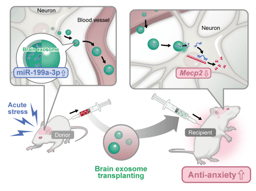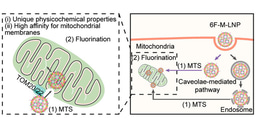Sperm on the Thermostat: How Heat Controls Male Fertility
Published in Biomedical Research

When it comes to starting a new life, few things are as crucial—or as overlooked—as the journey of sperm. For successful fertilization to occur, sperm must make a long and challenging voyage through the female reproductive tract to find and fertilize an egg. To accomplish this, sperm cells rely on an intricate set of biological tools.
One of the most essential is a protein channel complex called CatSper, which controls the flow of calcium ions into the sperm tail (or flagellum). This calcium influx is what powers a specific kind of movement known as hyperactivation—a vigorous, whip-like motion that gives sperm the strength and agility to reach and fertilize the egg.
Scientists have long known that CatSper is vitally essential for male fertility. Without it, sperm may look normal and can swim, but they lack the ability to hyperactivate and are infertile. However, how exactly CatSper is activated—and under what conditions—has remained something of a mystery.
In our new study, our research team* reveals a surprising and fascinating discovery: CatSper is directly activated by heat. That is, it acts as a kind of biological thermometer, turning on only when the temperature is just right. Even more interesting, we discovered that spermine, a naturally occurring molecule found in seminal fluid, can fine-tune this thermal sensitivity to prevent the sperm from activating too early.
Why Temperature Matters
It's no coincidence that most of mammalian testicles are located outside the body, in the scrotum. This positioning keeps them slightly cooler than the core body temperature—around 33 to 34 degrees Celsius. This cooler environment is vital for healthy sperm production and function. Yet, until now, it was unclear whether sperm actually sense temperature changes themselves or whether temperature only affects general sperm development and survival.
Our research shows that temperature is not just a background factor—it is directly sensed by sperm through the CatSper channel. Using an advanced electrophysiological technique to record ion flow in live mouse sperm, we discovered that CatSper becomes activated at a very specific thermal threshold of 33.5°C. Below this temperature, the channel remains closed; above it, the channel opens to allow calcium ions to flood in and trigger hyperactivation.
We also calculated something called the temperature coefficient, or Q₁₀, which tells us how sensitive a biological process is to changes in temperature. The Q₁₀ for CatSper was 5.1, meaning that a small increase in temperature causes a fivefold increase in CatSper activity—a remarkably steep and precise temperature response.
The Role of Spermine: Nature’s Unique Fertility Shield
If temperature alone could activate CatSper, that might actually be a problem. Imagine sperm becoming prematurely hyperactivated while still in the male reproductive tract, long before they even enter the female reproductive system. That kind of mistimed activation could exhaust the sperm’s energy or lead to abnormal movement, compromising fertility.
This is where spermine comes into play. Spermine is a polyamine—a small organic molecule naturally abundant in seminal plasma, the fluid that surrounds sperm in semen. We discovered that spermine has a fascinating ability: it reversibly blocks CatSper’s response to temperature. In other words, spermine acts like a safety lock, preventing the channel from opening too early, even if the temperature rises above 33.5°C.
This means that CatSper stays inactive while sperm are still in the testes due to a cooler environment, however, after mixing with seminal plasma, they are surrounded by spermine. Once the sperm cells enter the female reproductive tract, where spermine levels gradually drop, the block is finally lifted—and CatSper is free to respond to temperature and activate as needed. It’s an elegant mechanism that ensures sperm only become hyperactivated at the right time and place.
What This Means for Fertility—and Beyond
Our findings open up a completely new perspective on how sperm function is regulated—and how male fertility can be protected. First, we now know that CatSper is a temperature-gated ion channel, a feature not previously recognized. This thermal sensitivity may explain why the testes are evolutionarily designed to stay cooler than the rest of the body, and why even a small rise in testicular temperature—say, from tight clothing, hot tubs, or fever—could interfere with sperm function by prematurely activating CatSper.
Second, we’ve identified spermine as a natural regulator of this process. Its ability to safeguard CatSper from premature activation makes it a key player in maintaining sperm viability during storage and transport. This discovery could have practical implications not just for natural conception, but also for improving assisted reproductive technologies, such as sperm storage for IVF or fertility preservation in cancer patients.
Third, the tools and insights we’ve developed pave the way for future studies into male infertility. Some men have sperm that appear normal under the microscope but fail to fertilize eggs. Could temperature sensitivity or spermine regulation of CatSper be part of the explanation? We hope this work will inspire more investigation into the subtle, yet crucial, mechanisms that control sperm function.
Keeping it Cool—for a Reason
In conclusion, our research sheds new light on the delicate balance required for male fertility. CatSper, the calcium channel essential for sperm hyperactivation, is finely tuned to temperature, ensuring it activates only under the right conditions. And spermine, a key component of seminal plasma, helps prevent CatSper from switching on too soon.
Together, these findings highlight why maintaining testicular temperature below 34°C is critical for optimal sperm function—and why disruptions to this balance, whether through lifestyle or health conditions, could have real consequences for fertility.
Nature has evolved a beautifully precise system to ensure that sperm are primed for fertilization only at the perfect time. With this new understanding, we can better appreciate—and protect—this crucial step in the journey toward a new life.
---
* The research team: Dr. Dilip K. Swain, Ph.D., Citlalli Vergara, B.A., Dr. Júlia Castro-Arnau, Ph.D., and Dr. Polina V. Lishko, Ph.D.
Follow the Topic
-
Nature Communications

An open access, multidisciplinary journal dedicated to publishing high-quality research in all areas of the biological, health, physical, chemical and Earth sciences.
Related Collections
With Collections, you can get published faster and increase your visibility.
Women's Health
Publishing Model: Hybrid
Deadline: Ongoing
Advances in neurodegenerative diseases
Publishing Model: Hybrid
Deadline: Dec 24, 2025




Please sign in or register for FREE
If you are a registered user on Research Communities by Springer Nature, please sign in